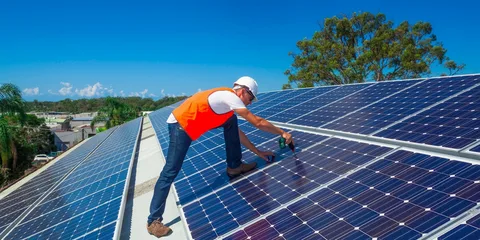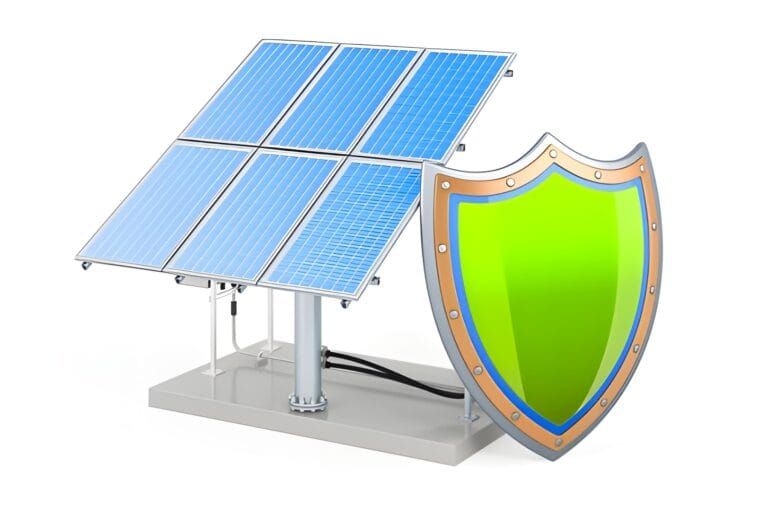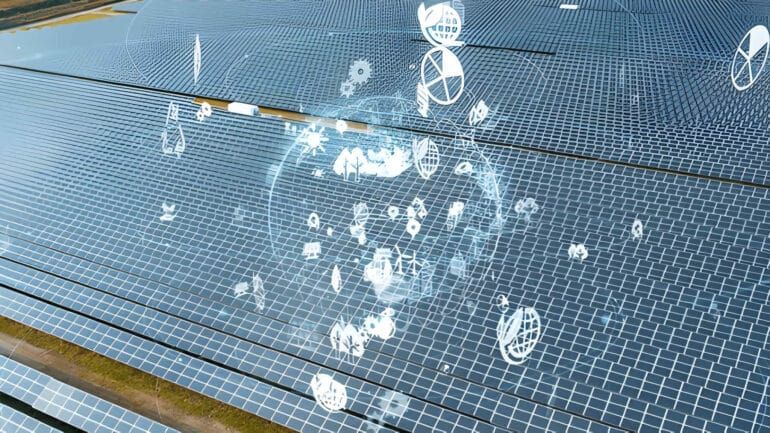Unlock the potential of sustainable energy with a 6.6kW solar system tailored for Australian households and businesses. Harnessing the abundant sunlight in Australia, a 6.6kW solar system offers unmatched efficiency and savings. By investing in this solar solution, you not only reduce your reliance on conventional energy sources but also take a significant step towards a greener and more sustainable future. Join the renewable energy revolution today and embrace the benefits of a 6.6kW solar system for long-term energy independence and cost savings.
Solar Energy and Its Importance in Australia
Australia, with its abundant sunshine, presents a prime environment for harnessing solar energy. The country’s vast landmass and high solar radiation levels make it an ideal location for solar power generation. Solar energy plays a crucial role in Australia’s transition towards renewable energy sources, reducing reliance on fossil fuels and mitigating environmental impact. As a nation heavily reliant on coal-fired power plants, integrating solar energy into the grid is essential for meeting emission reduction targets and addressing climate change concerns. Moreover, solar power offers economic benefits by reducing electricity bills for homeowners and businesses, thereby stimulating investment in clean energy technologies and creating job opportunities in the renewable energy sector.
Components of Solar Panel Systems
Solar panel systems consist of several key components that work together to harness sunlight and convert it into usable electricity. These components include photovoltaic (PV) panels, mounting structures, inverters, and electrical wiring. PV panels, typically made of silicon-based solar cells, are the primary components responsible for capturing sunlight and generating electricity through the photovoltaic effect. Mounting structures provide support for the panels and ensure optimal orientation and tilt angles to maximize solar exposure. Inverters play a crucial role in converting the direct current (DC) electricity generated by the panels into alternating current (AC) electricity suitable for household or grid use. Electrical wiring connects the various components, allowing the generated electricity to be distributed and utilized efficiently. Together, these components form a solar panel system capable of harnessing clean and renewable energy from the sun to power homes, businesses, and communities across Australia.
Understanding 6.6kW Solar Systems
A 6.6kW solar system is a popular choice for residential and commercial applications, offering a balance between size, cost, and energy production. This system size refers to its maximum capacity to generate 6.6 kilowatts of electricity under ideal conditions, typically during peak sunlight hours. Understanding the components and capabilities of a 6.6kW solar system is essential for individuals considering solar energy adoption to meet their electricity needs.
What a 6.6kW Solar System Entails
A 6.6kW solar system typically consists of photovoltaic (PV) panels, inverters, mounting structures, and electrical wiring. The number of panels required depends on factors such as panel wattage, efficiency, and available roof space. In Australia, where sunlight exposure is ample, a 6.6kW system may comprise approximately 18-24 solar panels, each with a capacity of around 275-350 watts. These panels are installed on rooftops or ground-mounted structures to capture sunlight and convert it into electricity through the photovoltaic effect. Inverters are essential components that convert the DC electricity generated by the panels into AC electricity compatible with household appliances and the electricity grid. Properly sized inverters ensure efficient energy conversion and system performance. Mounting structures provide support and secure attachment for the panels, optimizing their exposure to sunlight for maximum energy production. Electrical wiring connects the panels, inverters, and other system components, facilitating the flow of electricity within the system and to the electrical load or grid connection point. Overall, a 6.6kW solar system is a comprehensive renewable energy solution designed to harness solar power and offset electricity consumption from the grid, offering long-term energy savings and environmental benefits.
Capacity and Energy Generation Capabilities
The capacity of a 6.6kW solar system refers to its ability to generate up to 6.6 kilowatts of electricity, which can vary based on factors such as sunlight intensity, panel orientation, and shading. On average, a well-installed and properly maintained 6.6kW solar system in Australia can produce between 24-30 kilowatt-hours (kWh) of electricity per day, depending on location and weather conditions. This level of energy generation is typically sufficient to meet the needs of a medium-sized household or small commercial property, covering a significant portion of daily electricity consumption. During periods of peak sunlight, such as sunny days during summer, the system may even generate surplus electricity, which can be exported back to the grid for credits or stored in batteries for later use. Understanding the energy generation capabilities of a 6.6kW solar system enables users to estimate their potential savings on electricity bills and evaluate the system’s return on investment over its operational lifespan, typically ranging from 20 to 25 years.
Advantages of a 6.6kW Solar System
Investing in a 6.6kW solar system offers numerous advantages for homeowners and businesses seeking to harness solar energy for their electricity needs.
 Cost-effectiveness
Cost-effectiveness
One of the primary advantages of a 6.6kW solar system is its cost-effectiveness. While the initial investment may seem significant, the long-term savings on electricity bills often outweigh the upfront costs. With advancements in solar technology and increased competition in the market, the price of solar panels and related components has decreased significantly in recent years, making solar energy more accessible to a broader range of consumers. Many governments and utility companies offer incentives, rebates, and feed-in tariffs to encourage solar adoption, further reducing the overall cost of installing a 6.6kW solar system.
Maximizing Energy Savings and ROI
A 6.6kW solar system has the potential to generate a substantial amount of electricity, allowing homeowners and businesses to maximize their energy savings and return on investment. By harnessing the abundant sunlight available in locations such as Australia, a well-designed and properly installed 6.6kW system can offset a significant portion of electricity bills, especially during peak sunlight hours. The surplus electricity generated by the system can either be exported back to the grid for credits or stored in batteries for later use, further enhancing energy savings and reducing reliance on the grid. Over time, the cumulative savings on electricity bills can result in a favorable return on investment, making a 6.6kW solar system a financially rewarding choice for energy-conscious consumers.
Potential to Offset a Significant Portion of Electricity Bills
Another key advantage of a 6.6kW solar system is its potential to offset a significant portion of electricity bills. With its ample capacity to generate electricity, particularly during daylight hours when energy consumption is typically higher, a 6.6kW system can meet a substantial portion of the energy needs of a household or small business. This means less reliance on electricity sourced from the grid, leading to lower electricity bills and increased energy independence. By reducing the amount of electricity drawn from the grid, homeowners and businesses can mitigate the impact of future electricity price hikes and fluctuations, providing greater stability and predictability in their energy costs over the long term.
Factors Influencing System Performance
Several key factors influence the performance of a solar energy system, impacting its efficiency and overall effectiveness in generating electricity.
Geographic Location and Solar Irradiance
The geographic location of a solar energy system plays a crucial role in determining its performance. Regions with higher levels of solar irradiance, such as areas closer to the equator or those with fewer cloudy days, generally experience greater sunlight exposure, resulting in increased energy production. In contrast, regions with lower solar irradiance levels may generate less electricity, requiring larger or more efficient solar panels to compensate for reduced sunlight.
Roof Orientation, Tilt, and Shading
The orientation and tilt of the roof on which the solar panels are installed significantly impact system performance. Ideally, solar panels should be positioned to face south (in the Northern Hemisphere) to maximize sunlight exposure throughout the day. Additionally, the tilt angle of the panels should be adjusted to optimize solar capture, with steeper angles in regions with lower sun angles and flatter angles in areas with higher sun angles. Shading from nearby trees, buildings, or other obstructions can also hinder system performance by reducing sunlight exposure to the panels. Proper site assessment and design considerations are essential to minimize shading and maximize solar energy production.
 Quality of Solar Panels, Inverters, and Installation
Quality of Solar Panels, Inverters, and Installation
The quality of the solar panels, inverters, and installation process significantly influences the performance and longevity of a solar energy system. High-quality solar panels with efficient photovoltaic cells can convert more sunlight into electricity, maximizing energy production. Similarly, inverters play a crucial role in converting direct current (DC) generated by the solar panels into alternating current (AC) suitable for use in homes and businesses. Investing in reliable, well-designed inverters can improve overall system efficiency and reliability. Furthermore, proper installation by experienced professionals ensures that the solar panels are securely mounted, correctly positioned, and free from shading or other obstructions that could impair performance. Quality installation practices also minimize the risk of system failures, ensuring optimal performance and longevity of the solar energy system.
Environmental Benefits
Investing in solar energy systems like the 6.6kW setup offers various environmental advantages, contributing positively to sustainability efforts and reducing ecological impacts.
Reduction of Carbon Footprint and Greenhouse Gas Emissions
By harnessing clean, renewable energy from the sun, 6.6kW solar systems help decrease reliance on fossil fuels, which are major contributors to carbon dioxide (CO2) emissions and other greenhouse gases. By offsetting electricity generated from non-renewable sources like coal or natural gas, solar energy systems significantly reduce the carbon footprint associated with electricity consumption. This reduction in greenhouse gas emissions helps mitigate climate change, a pressing global environmental issue.
Contribution to Australia’s Renewable Energy Targets
Australia has set ambitious renewable energy targets to transition towards a more sustainable and environmentally friendly energy landscape. Solar power, including systems like the 6.6kW setup, plays a crucial role in meeting these targets by diversifying the energy mix and increasing the share of renewable sources in the country’s electricity generation. Investing in solar energy contributes directly to Australia’s renewable energy goals, fostering a cleaner and more sustainable energy future.
Preservation of Natural Resources and Ecosystems
Solar energy systems harness the abundant energy provided by the sun without depleting finite natural resources or causing significant environmental degradation. Unlike traditional energy sources such as coal or natural gas, solar power generation does not require the extraction, processing, or combustion of fossil fuels, which can have detrimental effects on ecosystems, water quality, and air pollution. By opting for solar energy, individuals and businesses can help conserve natural habitats, reduce habitat destruction associated with resource extraction, and protect biodiversity.
Financial Incentives and Rebates
Exploring the financial incentives and rebates available for installing a 6.6kW solar system is crucial for maximizing cost savings and optimizing the return on investment.
Government Incentives, Rebates, and Feed-in Tariffs
Governments at both federal and state levels in Australia offer various incentives and rebates to encourage the adoption of solar energy systems. These incentives aim to make solar power more accessible and affordable for homeowners and businesses. Federal initiatives include the Small-scale Renewable Energy Scheme (SRES), which provides Small-scale Technology Certificates (STCs) based on the system’s capacity and location. STCs can be traded or sold to reduce the upfront cost of purchasing and installing solar panels.
Many states and territories offer their own rebates and incentives on top of the federal scheme. For example, Victoria offers the Solar Homes Program, providing rebates for eligible households to install solar panels. New South Wales offers the Solar for Low Income Households Program, assisting low-income households with the upfront cost of solar panel installations. These government incentives and rebates significantly reduce the initial investment required for installing a 6.6kW solar system, making it more financially feasible for homeowners and businesses.
Cost-Saving Opportunities and Payback Period Estimation
Investing in a 6.6kW solar system offers significant long-term cost-saving opportunities by reducing electricity bills and potentially generating surplus energy that can be sold back to the grid. The payback period for a solar system depends on various factors, including the system’s cost, available incentives, energy consumption patterns, and local solar conditions. By estimating the payback period, homeowners and businesses can assess the financial viability of installing a solar system and make informed decisions about their investment.
Financing Options and Potential
Various financing options are available to help homeowners and businesses afford the upfront cost of installing a 6.6kW solar system. These options include solar loans, leasing arrangements, power purchase agreements (PPAs), and home equity loans. Solar loans allow homeowners to finance the system’s cost through affordable monthly payments, while leasing and PPAs involve third-party ownership of the system with fixed monthly payments or payments based on energy production. Home equity loans leverage the equity in a homeowner’s property to finance solar installations at favorable interest rates.
Installation Process and Maintenance
Installing a 6.6kW solar system involves several steps to ensure optimal performance and longevity, followed by ongoing maintenance to keep the system operating efficiently.
 Installation Process for a 6.6kW Solar System
Installation Process for a 6.6kW Solar System
The installation process for a 6.6kW solar system typically begins with a site assessment conducted by solar professionals. During this assessment, factors such as roof size, orientation, shading, and electrical infrastructure are evaluated to determine the best placement for the solar panels and other system components. Once the site assessment is complete and necessary permits are obtained, the installation team proceeds to mount the solar panels on the roof or ground-mounted structures, ensuring they are securely fixed and positioned to maximize sunlight exposure throughout the day. Next, the electrical components, including inverters, wiring, and metering equipment, are installed and connected to the existing electrical system. Finally, the system undergoes thorough testing to verify proper functionality and performance before being commissioned for use.
Maintenance Tips
To maintain optimal performance and extend the lifespan of a 6.6kW solar system, regular maintenance is essential. Here are some key maintenance tips:
- Keep Panels Clean: Regularly clean the solar panels to remove dirt, dust, and debris that can accumulate on the surface and reduce efficiency. Cleaning can be done with water and a soft brush or sponge, avoiding abrasive materials that could scratch the panels.
- Monitor Performance: Monitor the system’s performance regularly using monitoring software provided by the installer or manufacturer. Watch for any significant drops in energy production, which could indicate potential issues that require attention.
- Trim Vegetation: Trim back any trees or foliage that may cast shadows on the solar panels, especially during peak sunlight hours. Shading can significantly impact the system’s energy production, so keeping surrounding vegetation in check is essential.
- Schedule Inspections: Schedule periodic inspections with a qualified solar technician to assess the system’s condition, check for signs of wear or damage, and perform any necessary repairs or adjustments. Professional inspections help identify and address issues early, minimizing downtime and maximizing energy output.
Professional Installation and Regular Inspections
Professional installation by experienced solar technicians is crucial to ensure the safe and efficient operation of a 6.6kW solar system. Qualified installers have the expertise and training to properly assess site conditions, design the system for optimal performance, and execute the installation process according to industry best practices and local regulations. Additionally, scheduling regular inspections with certified professionals allows for proactive maintenance and troubleshooting, helping to identify and resolve issues before they escalate into more significant problems. By investing in professional installation and ongoing maintenance, solar system owners can enjoy peace of mind knowing their system is operating at peak efficiency and generating maximum energy savings for years to come.
Conclusion
A 6.6kW solar system presents a significant opportunity for homeowners in Australia to harness the abundant solar energy available and reap various benefits. With its cost-effectiveness, capacity to maximize energy savings, and potential to offset a significant portion of electricity bills, investing in such a system can be a wise decision for both financial and environmental reasons. Additionally, factors such as geographic location, roof orientation, and the quality of components play crucial roles in determining system performance and overall efficiency. By taking advantage of government incentives, rebates, and financing options, homeowners can further enhance the affordability of installing solar panels. Moreover, the installation process is straightforward, and with proper maintenance, the system can operate efficiently for years to come, providing clean and renewable energy while reducing carbon emissions and contributing to a sustainable future.
FAQs
How long does it take to install a 6.6kW solar system?
Typically, the installation process for a 6.6kW solar system takes around 1-3 days, depending on factors such as roof complexity and weather conditions.
What maintenance is required for a 6.6kW solar system?
Regular maintenance involves cleaning the panels to remove dirt and debris, checking for any damage or shading, and ensuring proper functioning of inverters and other components.
Are there any government incentives available for installing a 6.6kW solar system?
Yes, various government incentives, rebates, and feed-in tariffs are available to encourage the adoption of solar energy, reducing the upfront costs and providing ongoing financial benefits.

 Cost-effectiveness
Cost-effectiveness Quality of Solar Panels, Inverters, and Installation
Quality of Solar Panels, Inverters, and Installation Installation Process for a 6.6kW Solar System
Installation Process for a 6.6kW Solar System





